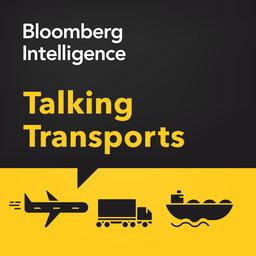Rourke on What’s Down the Road for Schneider
Schneider National appears well positioned once the current trough in the freight cycle gives way to growth. There’s a lot of uncertainty over timing for when rates will inflect positively, but there are some encouraging signs. In this Talking Transports podcast, Mark Rourke, Schneider National’s president and CEO, joins Lee Klaskow, Bloomberg Intelligence senior transportation and logistics analyst, to share his insights into the truckload, intermodal and brokerage markets. Rourke also talks about the company’s sustainability initiatives, the driver market, cross-border opportunities, regulations, rail service and life as a “cheesehead.”
 Talking Transports
Talking Transports


